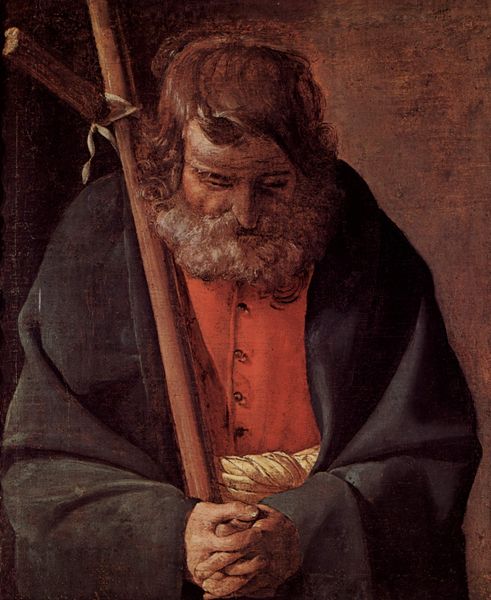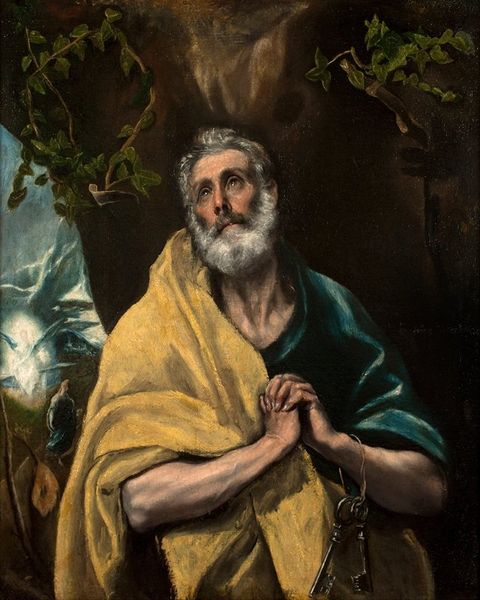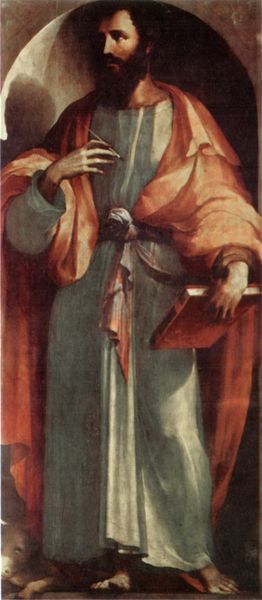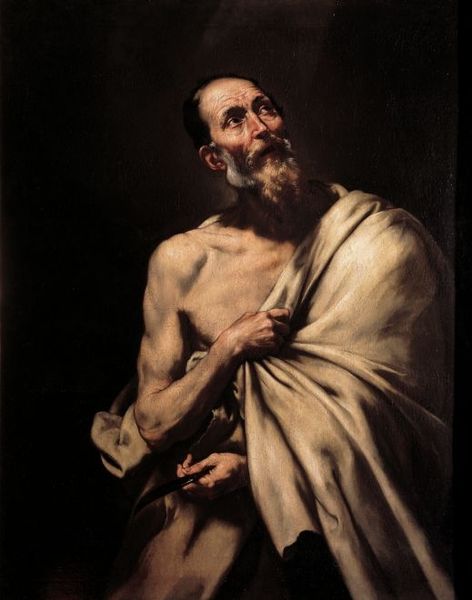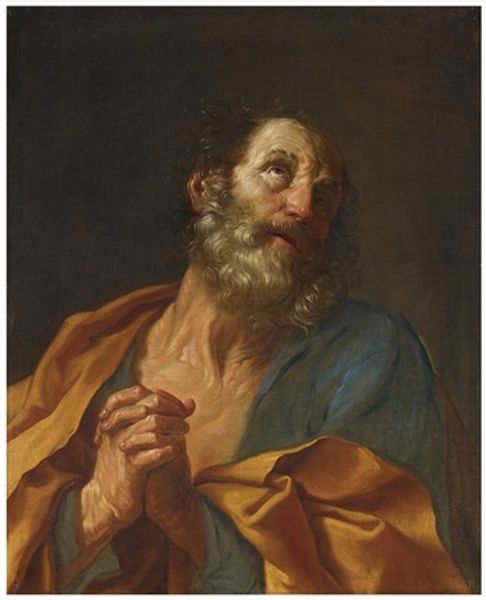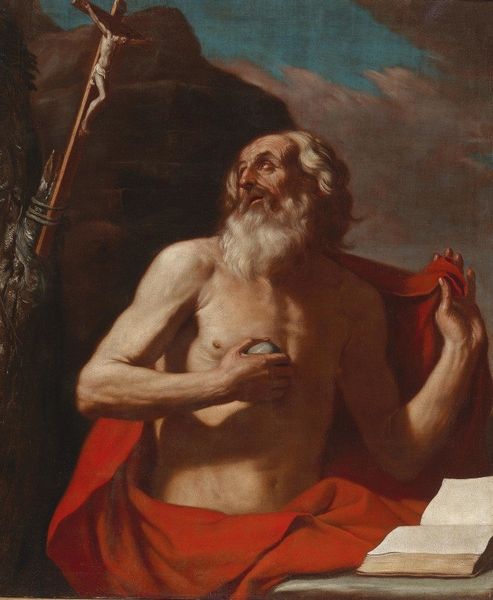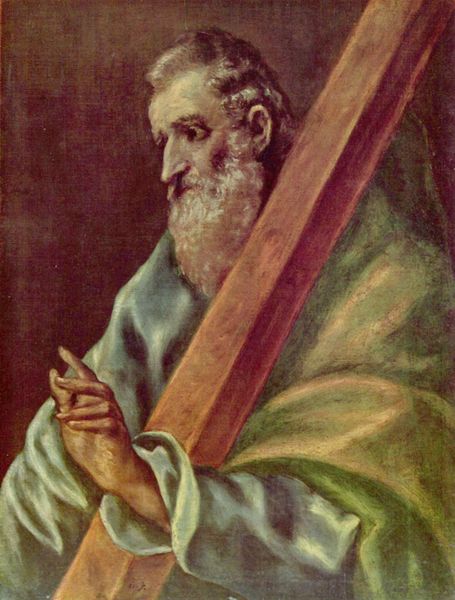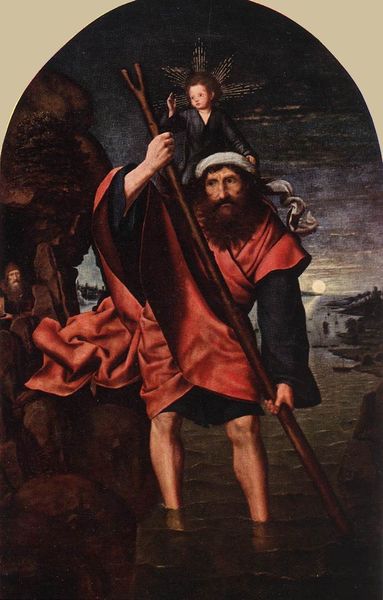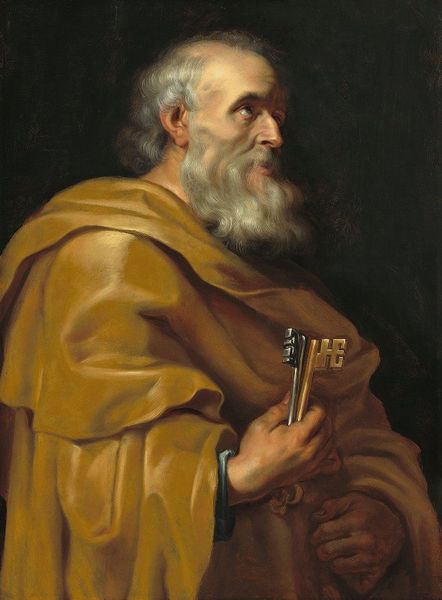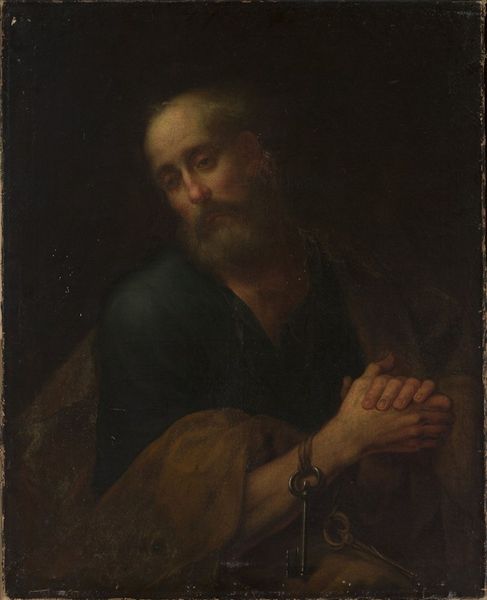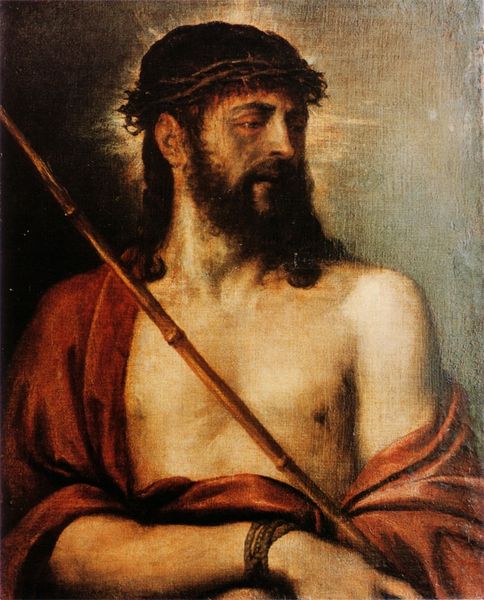
oil-paint
#
portrait
#
baroque
#
oil-paint
#
oil painting
#
history-painting
Copyright: Public domain
Curator: This is Francisco Herrera’s oil painting, *St. Andrew*, created around 1630. What’s your initial take? Editor: The muted tones and somber expression create an immediate sense of weighty resignation. The cross looms large, almost a burden carried against the heavy darkness of the background. Curator: Let’s place it within its context. Herrera, active during Seville's artistic golden age, was deeply influenced by the Counter-Reformation's emphasis on direct, emotional connections with religious figures. This piece, I think, reflects that. It speaks to the lived experience of faith, sacrifice, and the role of the Apostle as a proponent of radical social change. Editor: And it definitely feels of its time. I am curious about this image of the Apostle and its visual propaganda function; this figure becomes emblematic of devotion but also points to questions around iconography during periods of conflict and re-evaluation of values. Do we know the particular socio-political tensions shaping religious imagery during that era? Curator: Absolutely. Seville, at the time, was experiencing internal social inequalities coupled with imperial decline, leading to religious imagery reinforcing traditional hierarchies and colonial justifications. Herrera here leans into this, showcasing Andrew, a fisherman, but bathed in a light almost heroic—a saint that elevates social disparity rather than dismantle. It certainly brings forward considerations on who this work served. Editor: True, I read also a certain performativity; notice how the light catches the coarse fabric of Andrew's garments, adding layers of interpretation about chosen poverty versus inherent deprivation. Curator: Precisely. It is precisely through the use of his painterly skills, the play between dark and light and carefully placed details that we are now unpacking multiple potential interpretations. Editor: For me, it invites considering religious authority intersecting issues around power and representation. It prompts questioning these idealized images in relation to those excluded or marginalized due to belief, race, gender, or social status. Curator: I completely agree. This artwork invites ongoing interrogation on historical art's continuing relevance within critical conversations shaping identity and inclusive understanding.
Comments
No comments
Be the first to comment and join the conversation on the ultimate creative platform.
